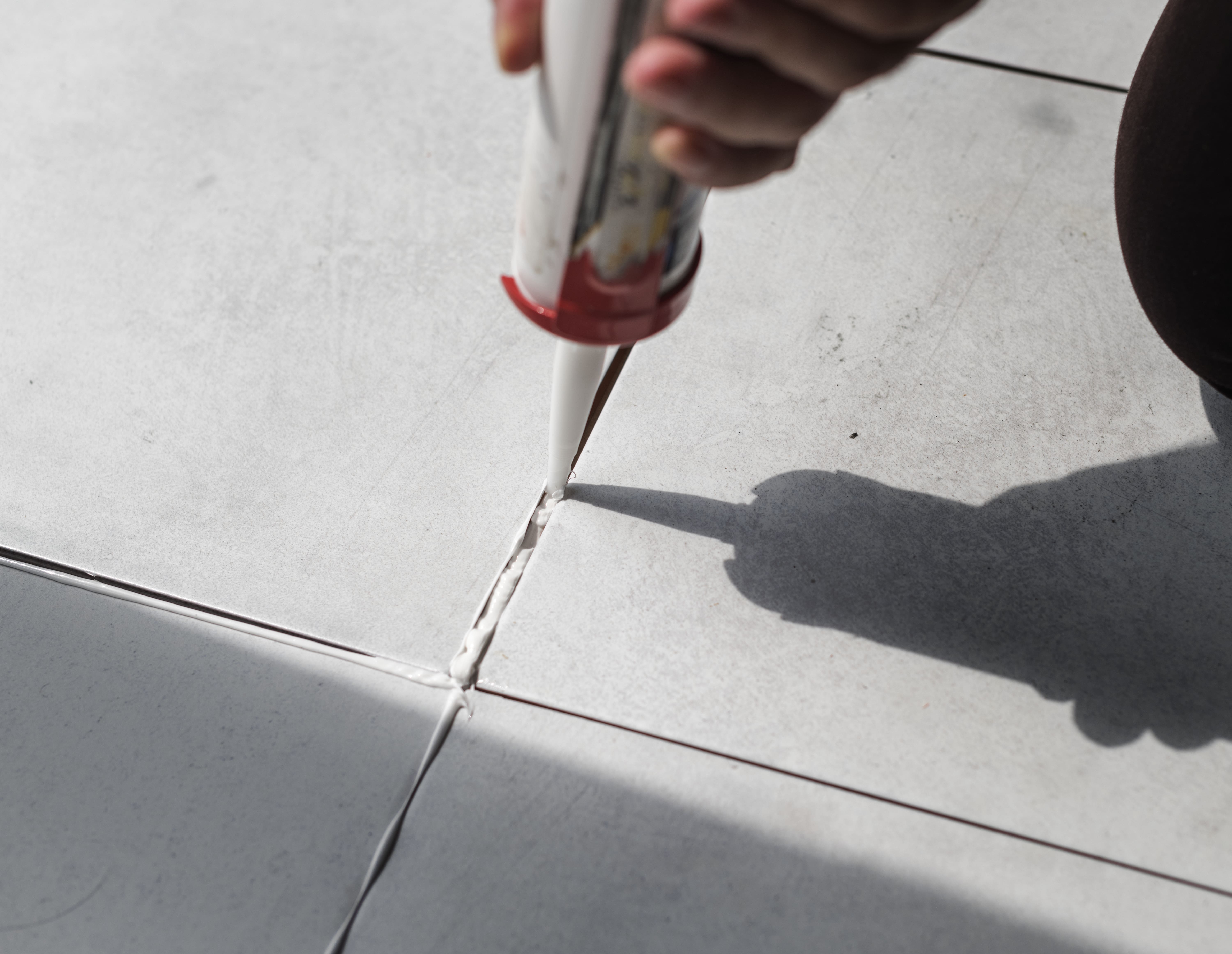The difference of choosing the right tile for your home can seem quite a daunting task — and rightfully so. Tiles are not just for flooring and walls—they define the aesthetic of your home. Whether you are renovating your bathroom, improving your kitchen or adding elegance to your hallway, the right tile can work wonders. Tiles have to look beautiful, but they also have to be functional, durable and appropriate to the environment.
This guide explains everything you need to know to choose the right tile for your home. From knowing all the types, styles and finishes that are available to you, to the practical side of things such as durability, maintenance. We will help you through the options and find the right one for your space.
Why Should You Have Tiles in Your Home?
Tiles are one of those home decisions that can make life easier, all while adding some style that lasts for years. They’re incredibly durable, so they can withstand any foot traffic in high-traffic areas of the home (think the kitchen, bathroom or hallway) without getting worn out or looking tired. They’re also a clever option in rooms where moisture is present, such as the bathroom, where they help prevent mold and mildew buildup—no constant fretting about water damage or stains accumulating over the years.
Tiles — which offer you all the latitude in the world to create a space that feels like “you”. Whether you’re looking for sleek, modern designs or colourful pattens or natural stone textures, there’s a style for even the most discerning taste. And because they resist scratching, fading, and stains, your tiles will stay fresh and vibrant year after year with minimal effort.
They’re also a terrific partner if you’re looking to create a healthier, low-maintenance home. Dust, pet dander and allergens don’t stand a chance in a tiled area — a quick mop and they’re gone. This easy-clean surface means less time scrubbing and more time enjoying your space, because you know it’s fresh, stylish and ready for whatever life throws your way.
Understanding the Different Types of Tiles for Your Home
The reason tiles are so great is because there are so many different options, but at the same time, choosing tiles can feel overwhelming. From glossy ceramics to raw natural stone, each variety of tile offers its unique appearance and purpose. But how can you tell which one is best for your home? The secret is knowing the various materials and what each material offers. Every room has different needs—whether waterproof tiles for bathroom suites or something durable enough to withstand high footfall in a busy hallway.
In the following section, we’ll dig into the most popular types of tiles, assess the pros and cons of each, and help you determine where they will work best in your home.
Ceramic Tiles: The Versatile All-Rounder
Ceramic tiles make one of the most used tiles for home projects, and no doubt that it will be. They are economical, adaptable and come in an incredible array of styles, tones and finishes. They are constructed from clay and other natural materials that are kiln-fired at high temperatures. The result is a hard-wearing tile that works in various rooms and can be used on walls and floors.
Perhaps one of the biggest advantages of ceramic tiles is their adaptability. As long as they are glazed they can be used in nearly any room, from the bathroom to the kitchen to the living room and outdoor areas. Ceramic tiles are also easy to clean and maintain, making them ideal for families with children or pets. The glaze also renders them water-resistant, although unlike porcelain tiles, which we’ll get into later, they’re not completely impervious to moisture.
Ceramic tiles come in high gloss to matte finishes and everything in between. It allows homeowners to experiment with different styles and moods. A matte finish, for example, best suits a subtle and natural look design, while a glossy finish can give space brightness and elegance. Ceramic Tiles besides available as an economical alternative to most other tiles, providing an excellent, high quality to price ratio for those on a budget.
But they do have some downsides. Although they are long-lasting, they can chip or shatter if exposed to considerable impact. In addition, unglazed ceramic tiles are porous, which means they can absorb water, stains and odours more readily than other types of material, which is why they may not be the best choice for high-moisture areas such as shower floors or wet-climate outdoor spaces.
Porcelain Tiles: The Durable Option
Porcelain tiles are often confused with ceramic tiles, and whilst they are both made from clay and fired in a kiln, the composition and manufacturing process of porcelain tiles make them denser, more durable, and less porous than ceramic tiles. Porcelain is fired at higher temperatures and is made from a more refined clay, which results in a tile that is exceptionally strong and highly resistant to moisture, staining, and wear.
Porcelain tiles are particularly popular for high-traffic areas, such as hallways, kitchens, and outdoor spaces, where durability is a key concern. They are also an excellent choice for bathrooms and wet rooms because of their low water absorption rate, making them less likely to suffer from mould or mildew over time. Thanks to their dense structure, porcelain tiles are highly resistant to scratches, making them a good option for homes with pets or heavy foot traffic.
Porcelain tiles are generally more expensive than ceramic tiles, but their durability and low maintenance needs often justify the higher cost in the long run. However, the increased density of porcelain can also make it harder to cut and install, so it’s worth considering hiring a professional to ensure a high-quality finish.
Natural Stone Tiles: A Timeless Luxury
If you’re looking to add a touch of elegance and luxury to your home, natural stone tiles are a classic choice. Each stone tile is unique, with its own natural veining, texture, and colour variations, giving your home a truly bespoke look.
Marble, for instance, is synonymous with luxury. Its smooth, polished surface and elegant veining make it a popular choice for high-end bathrooms and kitchens. However, marble is a porous stone, which means it requires regular sealing to prevent staining and water absorption. Marble can also be prone to scratching and etching, particularly if exposed to acidic substances like lemon juice or vinegar, so it's essential to be mindful of where it’s used and how it’s maintained.
Slate, on the other hand, is a highly durable natural stone that’s ideal for both indoor and outdoor use. Slate tiles are often used in kitchens, bathrooms, and patios due to their rugged appearance and slip-resistant texture. They come in various shades, from deep blacks and greys to rich greens and reds, allowing for a more dramatic or earthy design statement. Slate is less porous than other natural stones but still benefits from regular sealing to maintain its appearance.
Natural stone tiles are undeniably beautiful, but they do require a higher level of care and maintenance than other tile types. Regular sealing, cleaning with pH-neutral products, and avoiding harsh chemicals are necessary to keep your stone tiles looking their best. Additionally, natural stone can be more expensive than ceramic or porcelain, but many homeowners feel the beauty and unique character justifies the extra cost and maintenance.
Each type of tile offers its own set of advantages, and by carefully considering the needs of each room in your home, you can choose tiles that not only look beautiful but also stand the test of time.
Selecting the Perfect Tiles for Your Bathroom
Selecting the right tiles for your bathroom is one of the most crucial decisions in the design process, as it has a significant impact on both the functionality and aesthetic appeal of the space. Bathrooms are, by nature, high-moisture environments, and this means that the tiles you choose need to be not only stylish but also durable, water-resistant, and easy to maintain.
What Are the Best Tile Options for Moisture and Humidity in Bathrooms?
Bathrooms are subject to frequent exposure to water and steam, which makes selecting tiles that are resistant to moisture absolutely essential. The right tiles will not only prevent water damage and mould growth but also ensure your bathroom remains hygienic and easy to clean. This is why materials like porcelain, ceramic, and natural stone are particularly popular for bathrooms, as they are highly water-resistant and durable.
Porcelain tiles, for instance, are a fantastic option for bathrooms due to their low porosity and high water resistance. These tiles are fired at higher temperatures than ceramic tiles, making them denser and more impervious to water. Porcelain tiles are also highly durable and resistant to wear and tear, making them ideal for bathroom floors, where they can withstand frequent use and heavy foot traffic. They come in a wide variety of styles, colours, and finishes, including those that mimic natural stone or wood, offering you the beauty of these materials without the high maintenance.
Ceramic tiles are another excellent choice for bathroom walls and floors, especially in areas that aren’t constantly wet, like the bathroom walls or splash zones around sinks. Glazed ceramic tiles offer a protective layer that helps repel water, and they’re available in a broad range of designs, from traditional to contemporary. However, it’s important to note that ceramic tiles are slightly more porous than porcelain, so they may not be as well-suited to areas that experience heavy moisture, such as walk-in showers or around bathtubs.
Tile Finishes: Glossy, Matte, or Textured?
When selecting bathroom tiles, the finish of the tile is just as important as the material. The finish not only affects the overall look of the bathroom but also its practicality. The most common finishes for bathroom tiles are glossy, matte, and textured, each offering its own set of advantages and drawbacks.
Glossy tiles are a popular choice for bathroom walls, particularly in smaller bathrooms where they can help reflect light and make the space feel larger and brighter. Their smooth, reflective surface gives bathrooms a clean, polished look, and they’re easy to wipe down and keep clean, making them a practical option for walls and backsplashes. However, glossy tiles can be slippery when wet, so they’re generally not recommended for bathroom floors. That said, when used strategically, glossy tiles can create a spa-like, luxurious feel, especially when paired with natural light or well-placed lighting fixtures.
Matte tiles, on the other hand, offer a more subtle and grounded look. Their non-reflective surface gives them a more natural, organic appeal, making them an excellent choice for floors, particularly in modern or rustic-style bathrooms. Matte tiles tend to be less slippery than glossy ones, which makes them a safer option for wet areas like shower floors or the main bathroom floor. They are also great for hiding watermarks, dirt, and smudges, which can be beneficial in high-traffic bathrooms where constant cleaning isn’t always possible. However, they may require a bit more effort to clean than glossy tiles, as their rougher texture can trap dirt and grime more easily.
Selecting the Perfect Tiles for your Kitchen
Kitchens are high-traffic, high-use areas where spills, stains, and heat are constant challenges. The right tile choice can help protect your kitchen surfaces whilst enhancing the overall design and atmosphere of the space. Tiles need to be durable enough to handle dropped pots and pans, resistant to stains from foods like tomato sauce or wine, and able to stand up to the moisture and humidity that cooking creates. Additionally, the right tiles can set the tone for the entire room, whether you’re going for a sleek, modern look or a more rustic, country-style kitchen.
What Are the Best Tile Materials for a Durable and Stylish Kitchen?
When selecting tiles for your kitchen, the material you choose will significantly impact both the look and functionality of the space. Different materials offer various benefits and drawbacks, so it’s important to consider how you use your kitchen and what characteristics matter most to you—whether it’s durability, low maintenance, or aesthetic appeal.
Why Are Ceramic Tiles the Best for Affordable Flooring?
One of the most common materials available for kitchen floor and wall coverings are ceramic tiles; affordable, versatile, and available in a variety of designs. Unlike traditional granite surfaces, these tiles are formed from clay and other natural materials molded and fired at high temperatures to create durable surfaces that can withstand everyday kitchen use. Ceramic tiles come in a vast range of colours, patterns, and sizes, making them perfect for homeowners who want to achieve a custom look that matches their personal style.
Perhaps the best feature of ceramic tiles is the ease of maintenance. They’re easy to clean and stain resistant and can survive the occasional spill without damage. This makes them ideal for kitchen environments where cleanliness is a must. Next, ceramic tiles can be glazed or unglazed. Glazed tiles are coated to resist staining and water (good for kitchen backsplashes and walls). Elsewhere, unglazed ceramic tiles can give your kitchen more of a natural, rustic look, but you may need to seal them to minimize the risk of damage from moisture and stains.
Are Porcelain Tiles the Best Option for Flooring?
Porcelain tiles are an ideal choice for kitchen floors and walls if durability is your primary concern. Porcelain is a subtype of ceramic tile but is produced from denser clay materials and fired at far higher temperatures, making it far stronger and less porous compared to traditional ceramic tiles. That means porcelain is incredibly durable against water, stains, and scratches, so it is especially ideal for high-traffic kitchens that are prone to spills, messes, and foot traffic.
Design-wise also they are versatile. They are able to replicate the look of natural stone, wood, or even concrete, giving you a rich look without the maintenance or cost attached to natural products. Wood-look porcelain floor tiles, for instance, are a trendy pick for kitchens as they give the warmth and texture of wood along with being water resistant and durable as porcelain. Also, it can used for floors and walls, creating a seamless look throughout your kitchen.
The downside is that porcelain tiles are more expensive than standard ceramic tiles, and because they're denser ceramic tiles, they can be more difficult to cut and install. Nevertheless, because of their long-lasting durability and low maintenance requirements, they are a good investment over time.
What Are the Best Tile Finishes for a Kitchen?
Once you've chosen the material for your kitchen tiles, the next step is selecting the right finish. The finish of your tiles affects both their appearance and their practicality, especially in a kitchen where spills and splatters are common.
Glossy finishes are a popular choice for kitchen walls and backsplashes because they reflect light and create a clean, polished look. Glossy tiles are easy to wipe down and keep clean, making them ideal for areas that are prone to grease or food splatters, such as behind the stove or around the sink. However, glossy tiles can be slippery when wet, so they are generally not recommended for floors.
Matte finishes offer a more understated, natural look that works well in kitchens with a rustic or industrial design. Matte tiles are less reflective than glossy ones, which can help hide smudges and water spots. They are also slip-resistant, making them a better choice for kitchen floors where safety is a concern.
Textured tiles can also be used in kitchens, particularly on floors where a bit of extra grip is needed. Textured porcelain or stone tiles add depth and character to the space, and they can help prevent slips in high-traffic areas. However, textured tiles may require more effort to clean, as dirt and grime can accumulate in the crevices.
What Are the Best Modern Tiles For A Sleek Look?
If you’re drawn to clean lines, simplicity, and a more contemporary look, modern tile styles are an excellent option. Modern tile designs focus on minimalism, with an emphasis on smooth surfaces, neutral colours, and geometric shapes. These tiles are perfect for creating a sleek, sophisticated atmosphere in any room, from kitchens and bathrooms to living spaces and hallways.
Large-format tiles are a staple of modern interior design. These tiles, which are typically larger than traditional tiles (ranging from 12x24 inches to 24x48 inches or even larger), create a seamless, uniform look that enhances the feeling of spaciousness in a room. Large-format tiles are especially popular in open-concept living areas, kitchens, and bathrooms, where they can help create a sense of flow and continuity. The reduced number of grout lines also makes these tiles easier to clean and maintain, contributing to their appeal in modern homes. Large tiles are often used in neutral colours, such as white, grey, or beige, allowing other elements of the room, like furniture or artwork, to take centre stage.
Geometric patterns are also a key feature of modern tile design. Hexagonal tiles, for example, are a popular choice for creating bold, eye-catching patterns on floors and walls. These tiles can be used in a monochromatic colour scheme for a subtle, minimalist look or in contrasting colours to create a more dynamic, playful design. Geometric tiles are particularly effective in bathrooms, kitchens, and entryways, where they can serve as a focal point and add a touch of modern artistry to the space.
Another popular choice for a sleek, modern look is matte finish tiles. Unlike glossy tiles that reflect light, matte tiles offer a soft, understated finish that gives a contemporary edge to any room. Matte tiles are perfect for creating a calming, sophisticated atmosphere, especially in spaces like bathrooms and kitchens, where they bring a subtle elegance without the glare.
How to Choose the Right Tile Size for Every Room in Your Home
Tile size plays a crucial role in how a room feels, and it can dramatically alter the perception of space. Choosing the right size isn't just about aesthetics; it also has practical implications for the overall layout, ease of installation, and long-term maintenance.
Advantages of Using Large Tiles
Large-format tiles have become increasingly popular in modern design due to their ability to create a sense of openness and flow. Tiles that are larger—typically 12x24 inches or bigger—can make a room feel more expansive and less cluttered. This is especially beneficial in open-plan living spaces, bathrooms, or kitchens where you want to enhance the feeling of space. The fewer grout lines you have with large tiles, the more seamless and uninterrupted the floor or wall appears, which can help create a more modern, minimalist look.
In smaller rooms, such as bathrooms or narrow hallways, large tiles might seem counterintuitive, but they can actually make the space feel larger. When large tiles are laid on the floor or walls, they reduce the visual busyness that smaller tiles and their associated grout lines can create. The key is to ensure that the room's layout works with the tile size, meaning that cuts and awkward corner pieces are minimised. Large-format tiles can be used on both floors and walls to enhance a cohesive, uniform look, but keep in mind that larger tiles may be more challenging to install, requiring precise measurements and cuts.
Advantages of Using Small Tiles
On the other hand, small tiles, offer a level of intricate detail that large tiles can’t achieve. Smaller tiles are often used for creating eye-catching patterns or adding texture to a space. They work especially well in areas where you want to make a visual statement, like a shower floor, backsplash, or feature wall. The small size allows for flexibility in design, giving you the freedom to play with different layouts, patterns, and even colour combinations.
Mosaic tiles, for example, can be used to introduce a mix of colours or materials, creating a unique look that adds depth and personality to a room. Small hexagonal tiles, penny rounds, or classic subway tiles are perfect for vintage or retro-inspired designs, whilst tiny glass or metallic tiles can bring a touch of modern luxury to a space.
However, small tiles do come with some practical considerations. More grout lines mean more cleaning and maintenance, especially in areas prone to moisture, like bathrooms or kitchens. Grout can discolour over time, and mould may develop in wet environments if proper precautions aren’t taken. So, whilst small tiles are great for adding detail and texture, it’s important to factor in the upkeep they may require.
How Do You Choose the Right Grout for Your Tiles?
Choosing the right grout for your tiles is an essential part of the design process that goes beyond colour; it involves selecting the right type, finish, and even texture to match the needs of your space. Grout holds tiles in place, seals the joints, and impacts both the look and longevity of your tiling. With the right grout, you can enhance the durability of your tiles and even elevate the room’s overall aesthetic. Here’s what to keep in mind as you make your grout selection.
1. Understand Grout Types
Grout generally comes in two primary types: cement-based and epoxy. Cement-based grout is the traditional option and works well for most tiling projects, offering flexibility with different colours and finishes. However, it does need to be sealed after installation, as it can be porous and absorb moisture, especially in areas like bathrooms or kitchens.
Epoxy grout, on the other hand, is non-porous and highly resistant to stains, water, and chemicals, making it ideal for areas prone to moisture, like showers, pools, or outdoor spaces. While epoxy grout can be slightly more expensive and requires precise application, its durability and low-maintenance nature make it a worthwhile investment in the long run.
2. Consider the Grout’s Texture and Finish
Grout also comes in sanded and unsanded forms, and the choice between them depends largely on the width of your tile joints. Sanded grout includes fine sand particles and is suitable for grout lines that are 1/8 inch or wider. It’s often used for flooring because it’s less likely to crack or shrink, giving a more durable finish for wider joints.
Unsanded grout is smoother and works well for narrow grout lines (less than 1/8 inch). This option is ideal for wall tiles or delicate materials like glass or polished stone, as it provides a refined finish without scratching the tile surfaces.
3. Select the Right Grout Colour
Once you’ve chosen the type of grout, picking the right colour is crucial for achieving the look you want. The colour of your grout can change the whole look of your tiles—either making them pop with a contrasting shade or creating a seamless look with a closely matching colour.
- For a bold look, go for a contrasting colour, which will outline each tile and create a striking pattern effect.
- If you prefer a smooth, unified appearance, choose a grout colour that matches your tile as closely as possible, allowing the tiles to blend together for a more subtle finish.
- Neutral colours like light grey or beige provide a middle ground, adding definition without overpowering the tiles and hiding dirt better than pure white grout.
4. Think About Maintenance Needs
The type and colour of grout can affect how much maintenance your tiles require. Lighter grout colours tend to show stains and dirt more easily, especially in high-traffic areas, while darker colours or neutrals can be more forgiving. Regardless of colour, consider applying a sealant to cement-based grout to protect it from moisture, stains, and mildew, particularly in areas exposed to water.
Epoxy grout is already water- and stain-resistant, so it usually doesn’t require sealing, making it a great choice for low-maintenance needs.
5. Factor in Tile Material and Style
The material and style of your tiles can also influence your grout choice. Natural stone tiles, for example, may require a specific type of grout or even special treatment to avoid staining. Delicate or decorative tiles may benefit from a smooth, unsanded grout for a clean, polished finish that doesn’t distract from the tile’s texture or pattern.
In summary, choosing the right grout is all about finding a balance between aesthetics, durability, and maintenance. The best grout for your tiles will complement the design, handle the demands of the space, and ultimately bring out the beauty of your tiles while ensuring they last. With the right grout, you’ll give your tiled space that polished, professional finish that makes it feel complete.
What’s the Difference Between Standard Grout and Epoxy Grout?
The type of grout you choose is just as important as its colour. Traditional cement-based grout is the most commonly used type, and whilst it’s effective for most applications, it does have its limitations, particularly in wet areas. Cement grout is porous, which means it can absorb water, stains, and dirt over time, leading to discoloration and mould growth if not properly sealed. It’s important to apply a good-quality sealer to cement grout, particularly in high-moisture environments like bathrooms and kitchens.
For areas exposed to a lot of moisture or heavy use, epoxy grout is a better option. Unlike cement-based grout, epoxy grout is water-resistant, stain-resistant, and doesn’t need to be sealed, making it ideal for showers, bathroom floors, or kitchen backsplashes. Whilst epoxy grout tends to be more expensive and trickier to work with than traditional grout, its long-term durability and ease of maintenance often make it worth the investment, especially in wet or high-traffic areas.
Why Should You Use Mould-Resistant Grout in Wet Areas?
In spaces like bathrooms, showers, and kitchens, where moisture is a constant concern, it’s important to choose a grout that can withstand damp conditions without succumbing to mould and mildew. Mould-resistant grout contains additives that help inhibit the growth of mould, mildew, and bacteria, keeping your tiled surfaces cleaner and healthier for longer.
Choosing the Perfect Tiles for Your Home
Choosing the right tiles for your home isn’t just about picking something that looks nice. It’s also about understanding the practical things—like the size of the tiles, their shape, and even the grout you use.
At the end of the day, tiles are more than just something to cover your floors or walls. They’re a key part of your home’s design that show off your personal style and bring everything together. By keeping a balance of style, practicality, and durability, you’ll end up with tiles that not only look great but will also last for years to come.

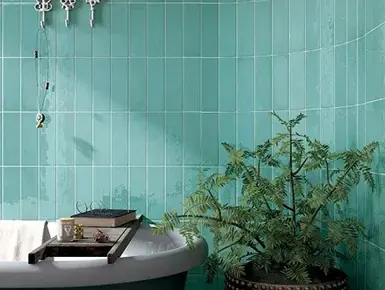
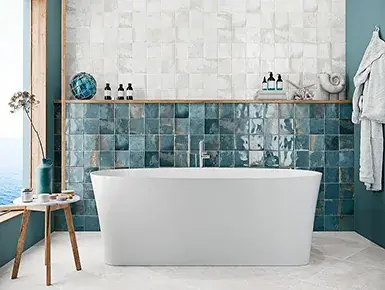
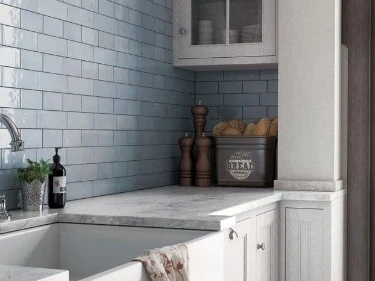
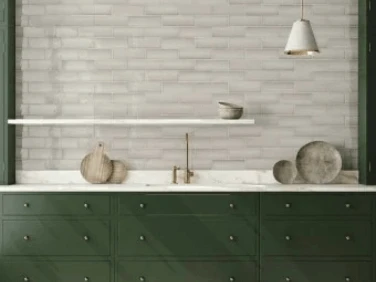
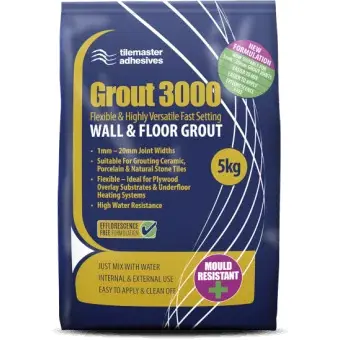
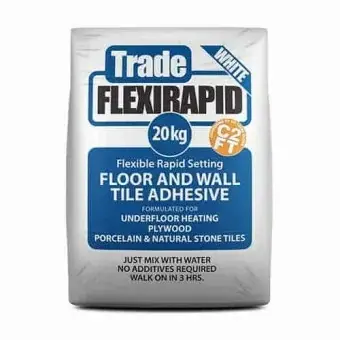








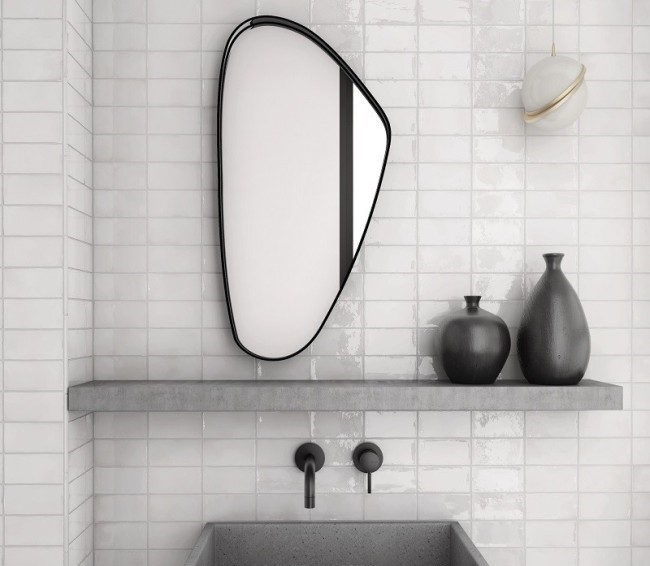
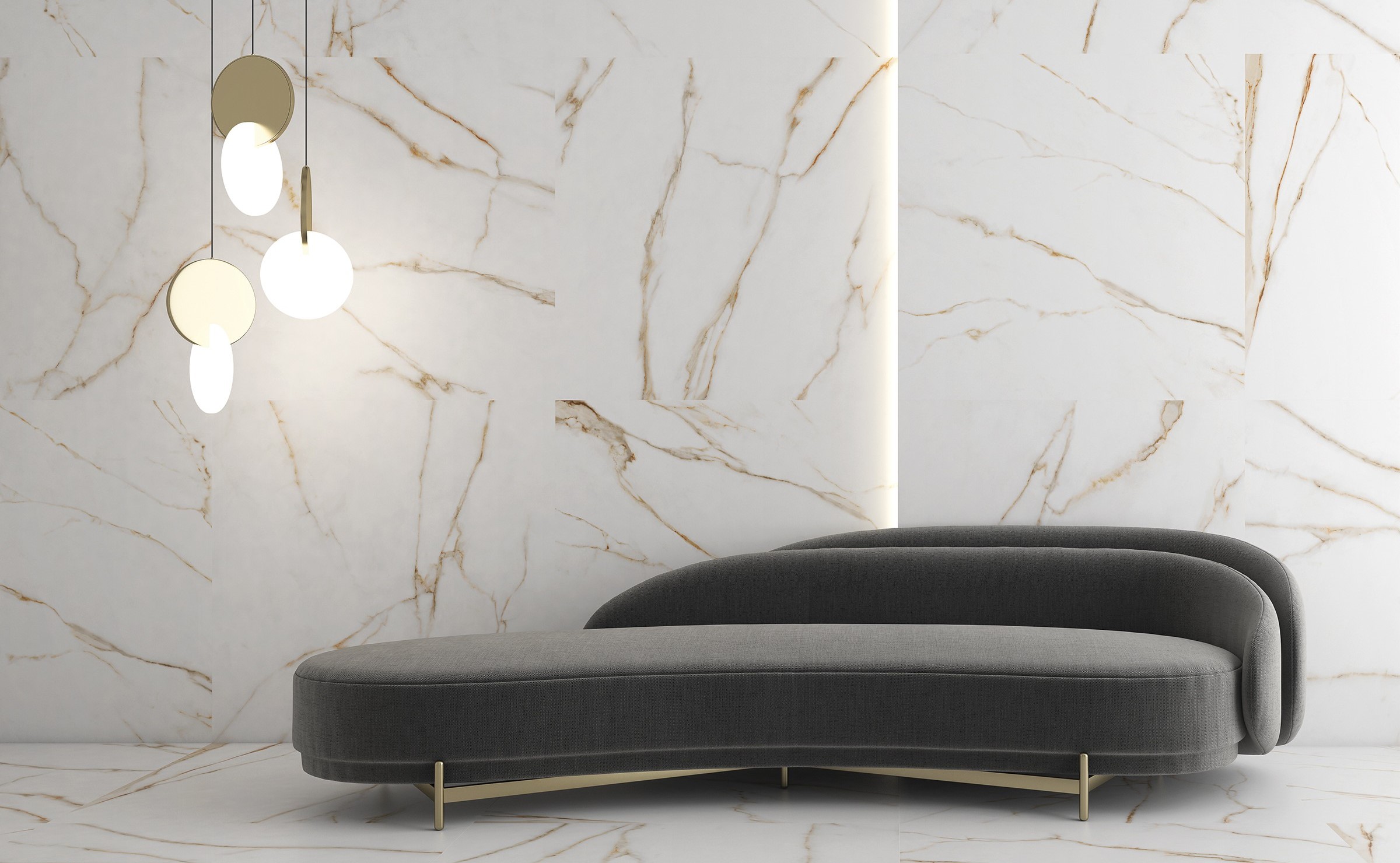
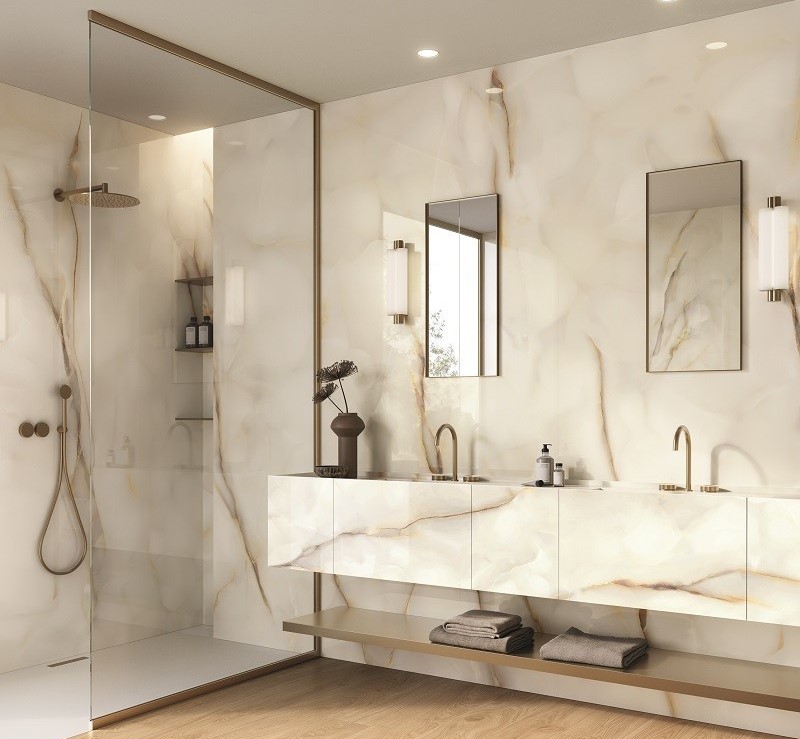
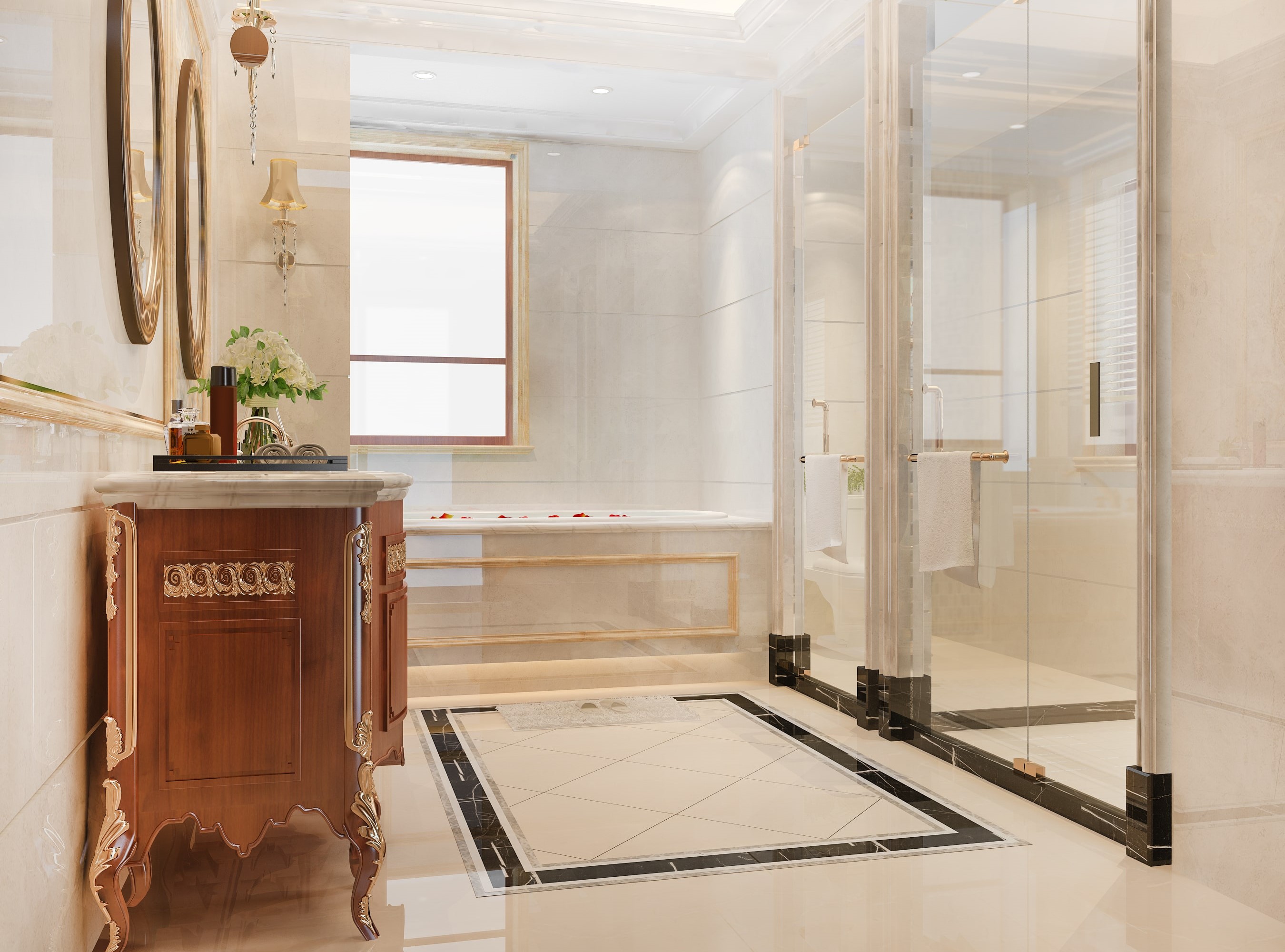
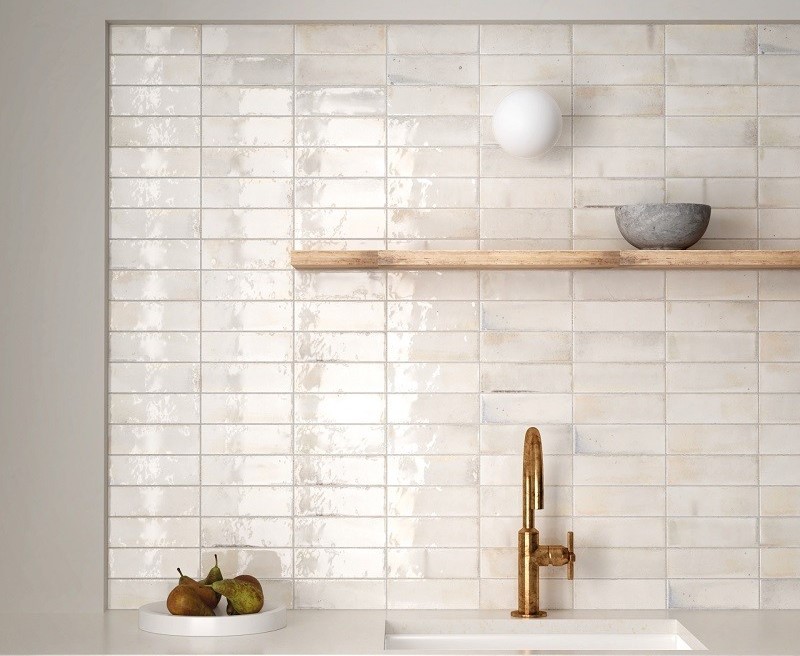
.jpg)

